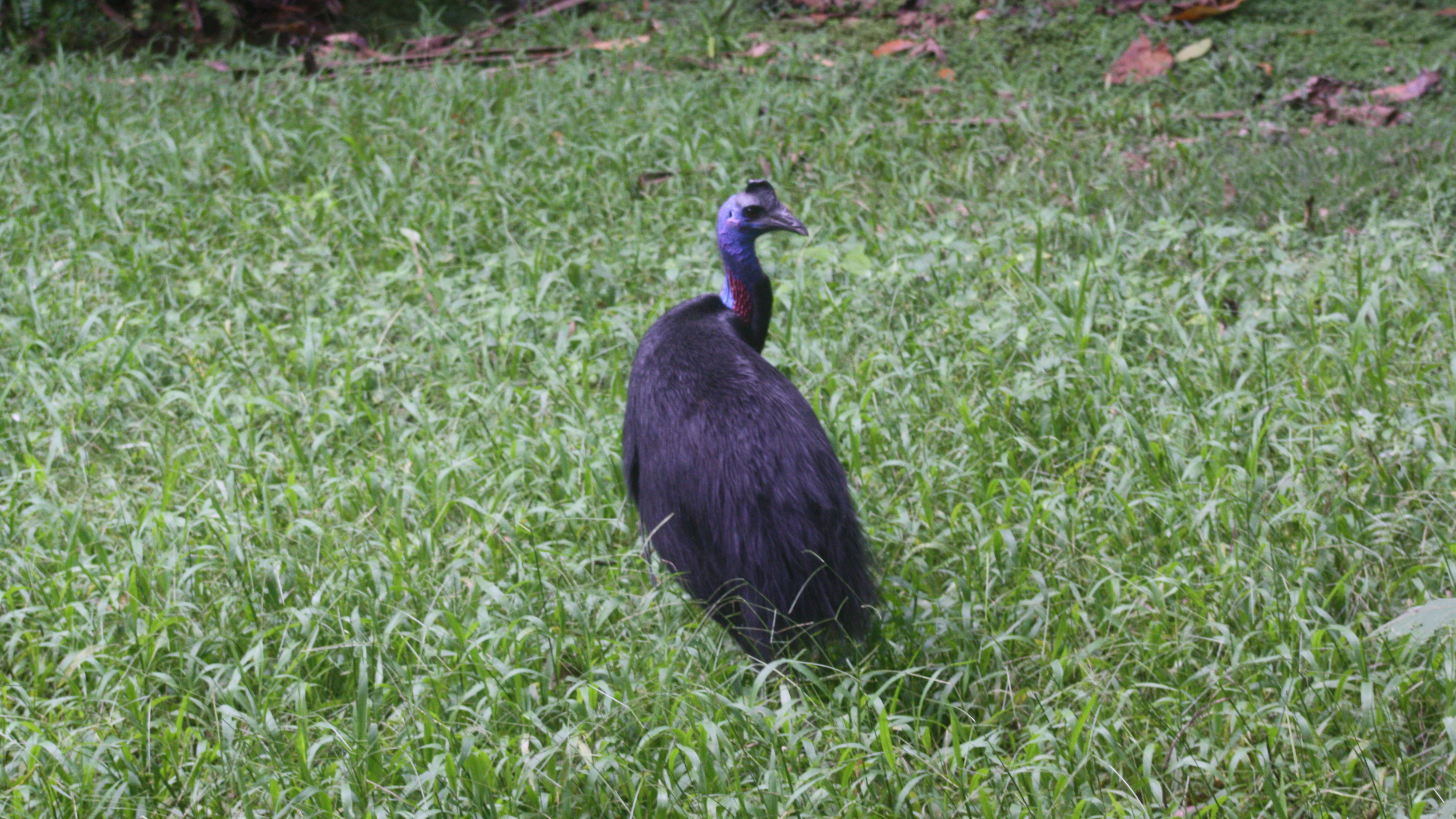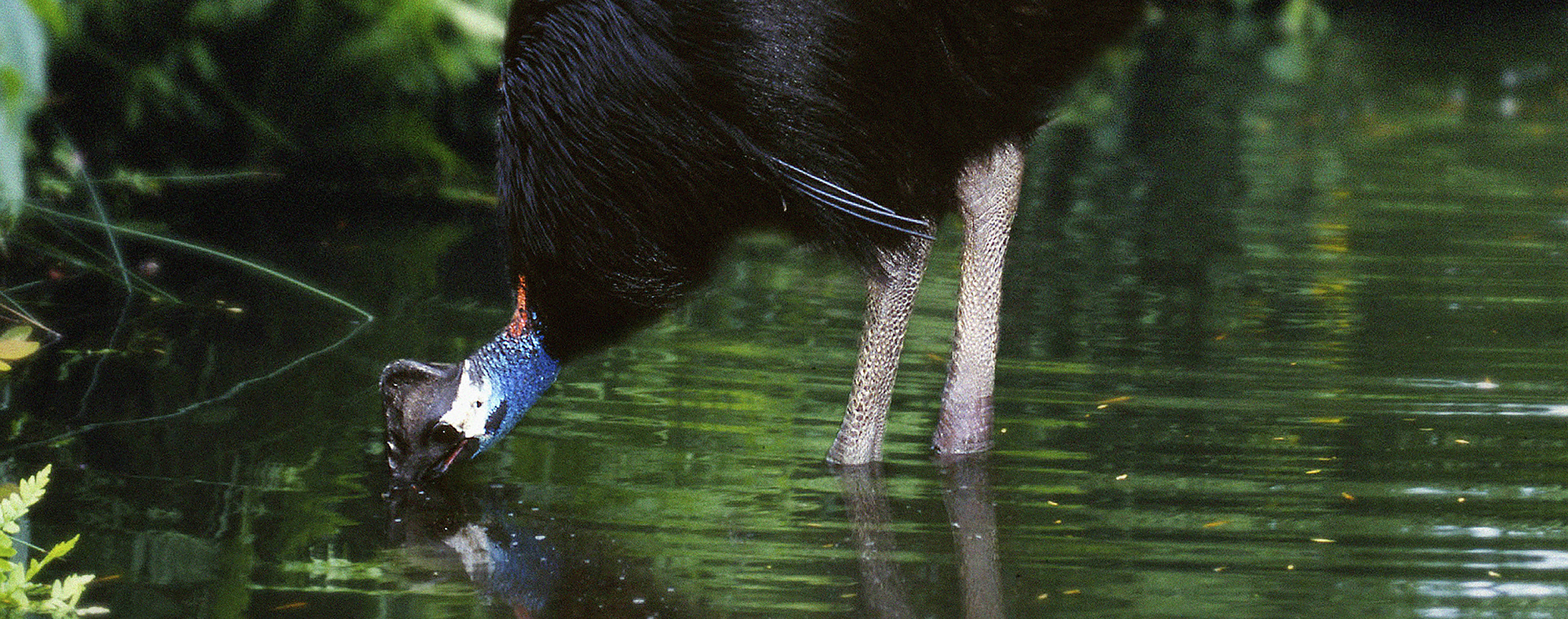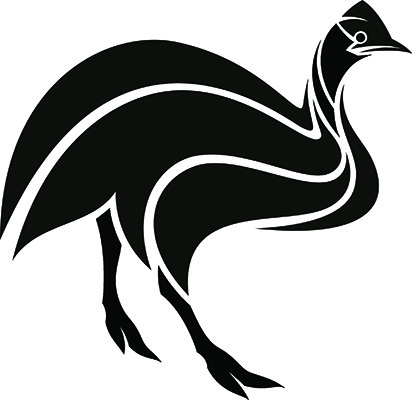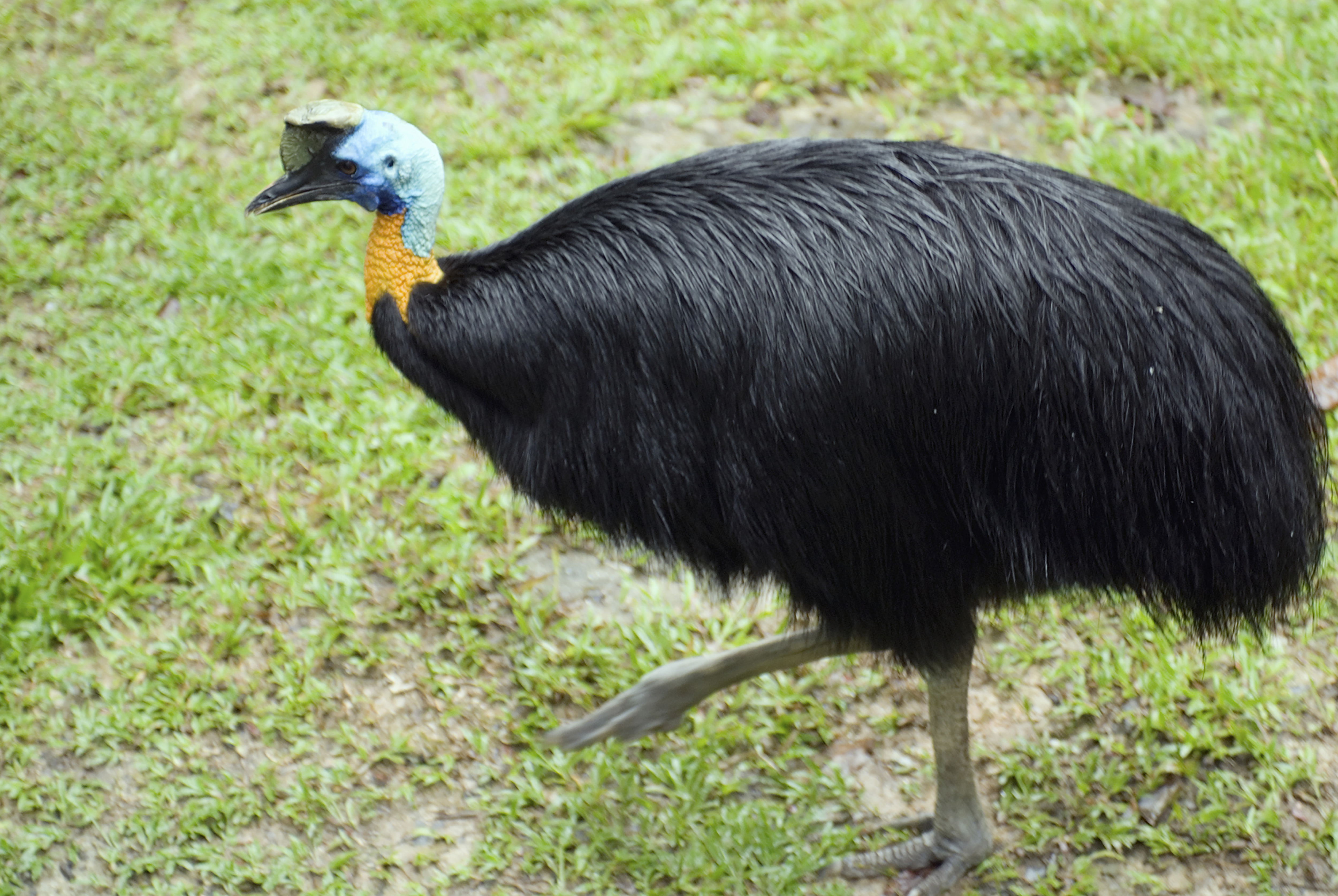Dwarf Cassowary
(Casuarius bennetti)
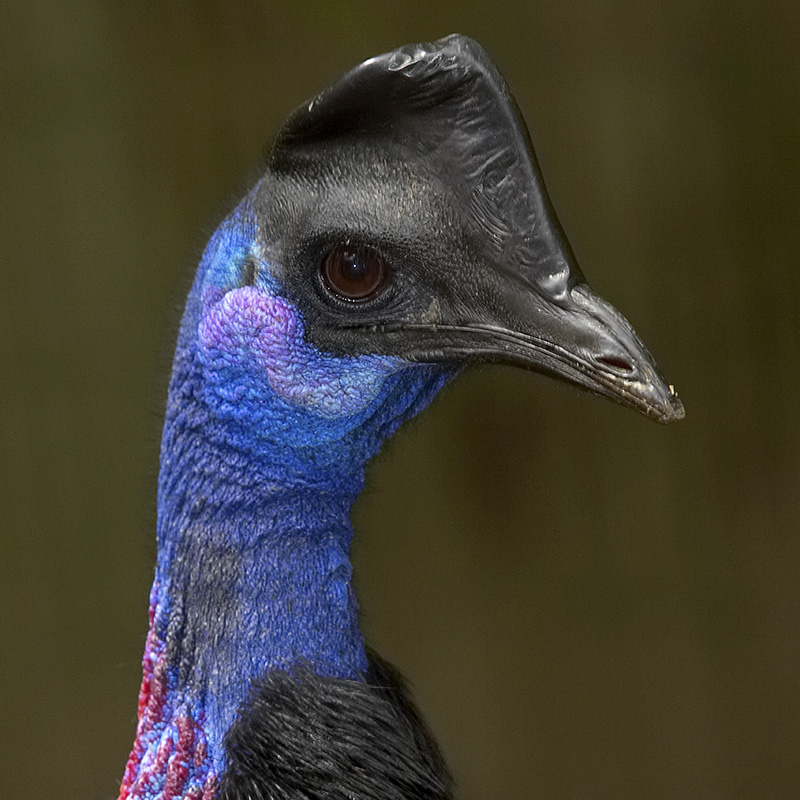
New Guinea Montane Forests
STATISTICS
Height up to
135 cm
Weight up to
18 kgs
Lifespan
26 Years
Speed - Jumping - Kicking - Swimming Ability
The Dwarf Cassowary is the smallest of the cassowaries and is characterised by its black plumage, blue and red head and neck and horny casque on the top of its head. With little wings, this is a flightless bird. This species differs from its relatives as it lacks the coloured wattles of flesh hanging from its neck. Its legs are lacking in feathers but are extremely powerful. It has three toes with a singular giant claw on the center toe.
The Dwarf Cassowary is a shy bird, rarely seen but most active in the day when it is searching for food. It is regarded as a high altitude species and prefers steep mountainous terrain of up to 3,000 meters and dense forest vegetation. The reproduction of this species has not been studied but it is usually found alone or in pairs and will kick if threatened.
It uses the crest on its head to sort through fallen leaves to find food such as fruit, fungi, insects, plant tissue and invertebrates although it feeds predominantly on fallen fruits. The Dwarf Cassowary is responsible for the distribution of large fruits for approximately 70 species of trees as well as smaller seeds for about 80 species of trees.
BIODIVERSITY BENEFIT
Seed Dispersal
THREATS
Habitat Loss
Agriculture, building of roads, flight paths and logging.
Hunting
Logging opens up previously inaccessible areas to hunters.
Predation
Predation by pigs and dogs.
PROTECT THE WILDARK 100
